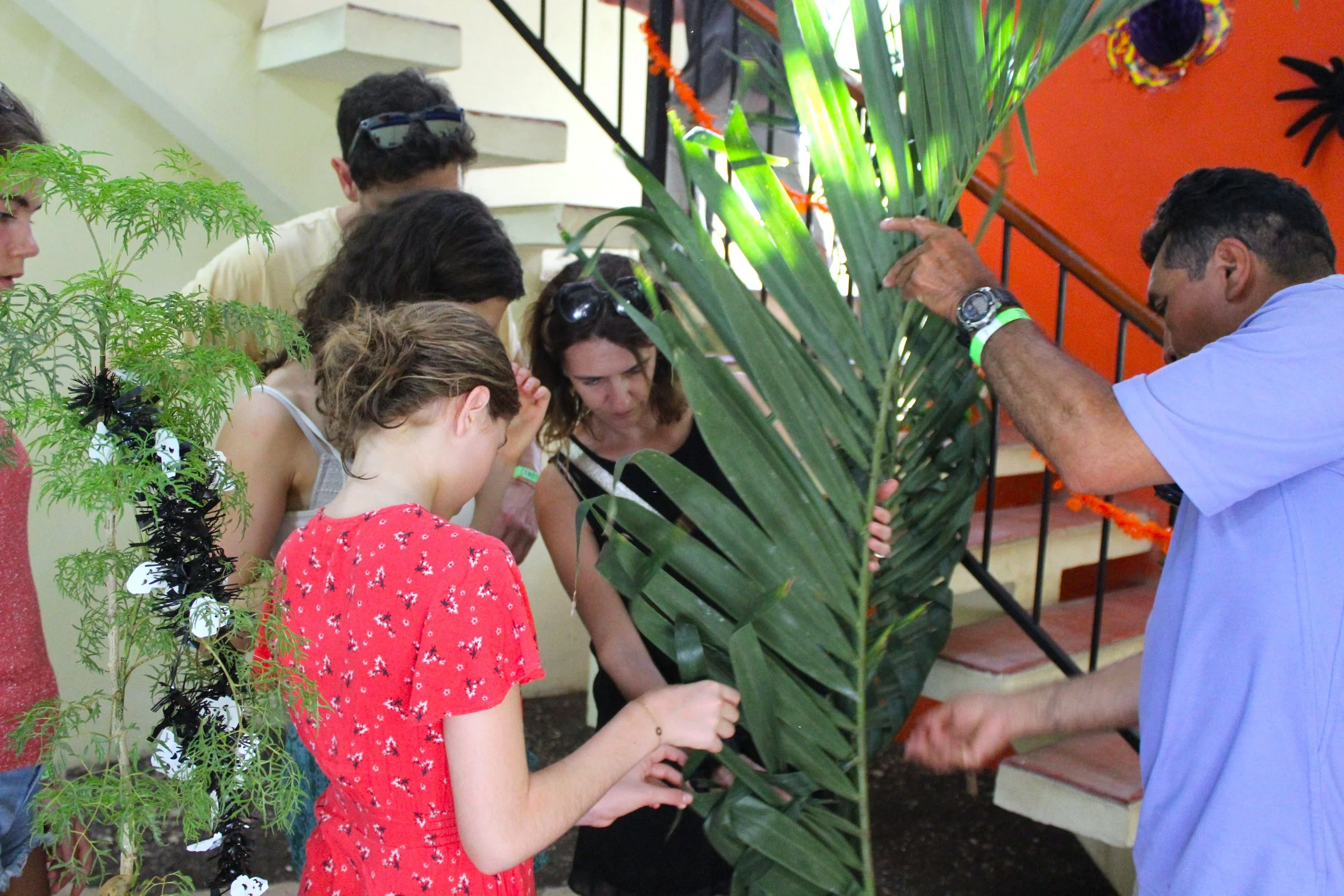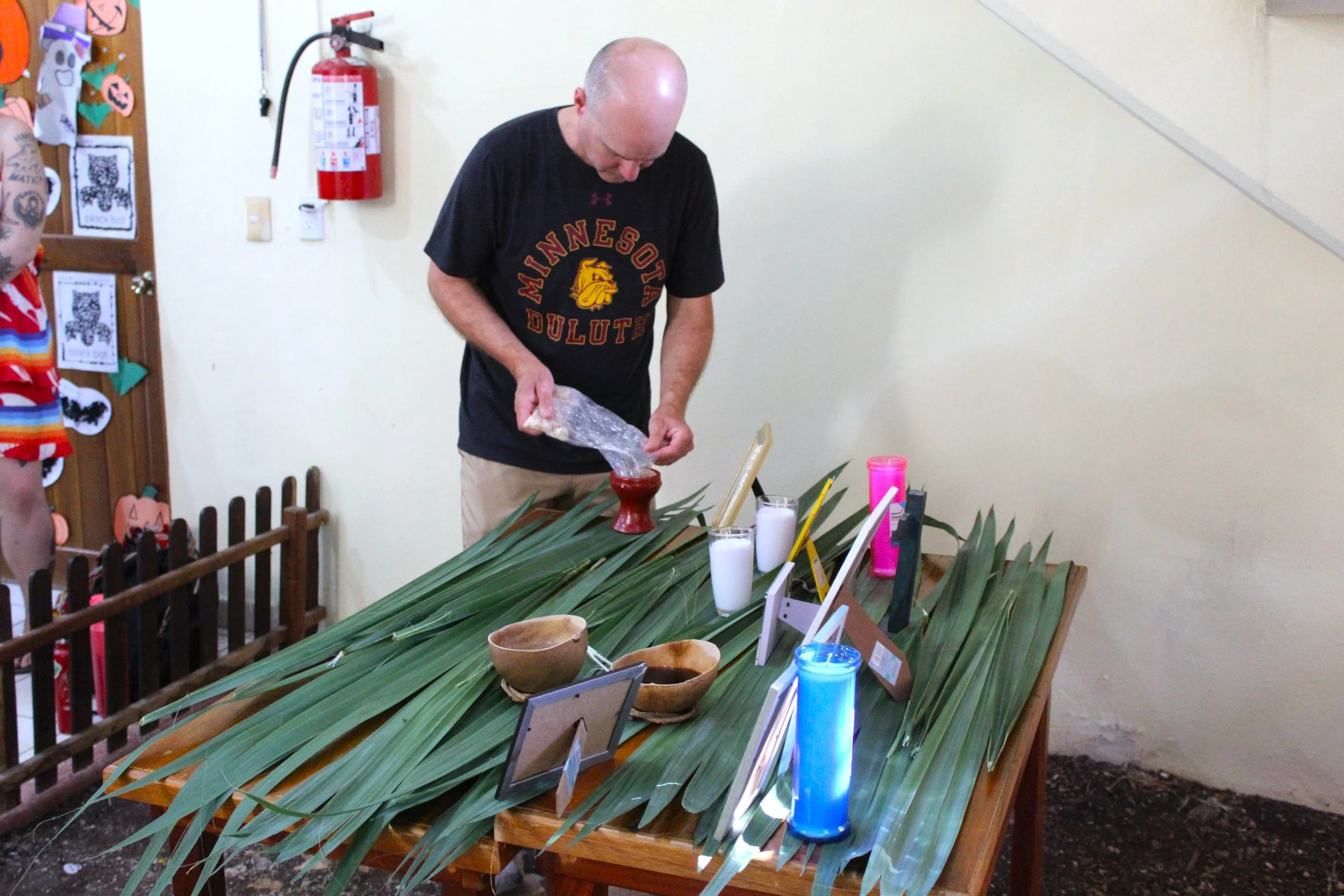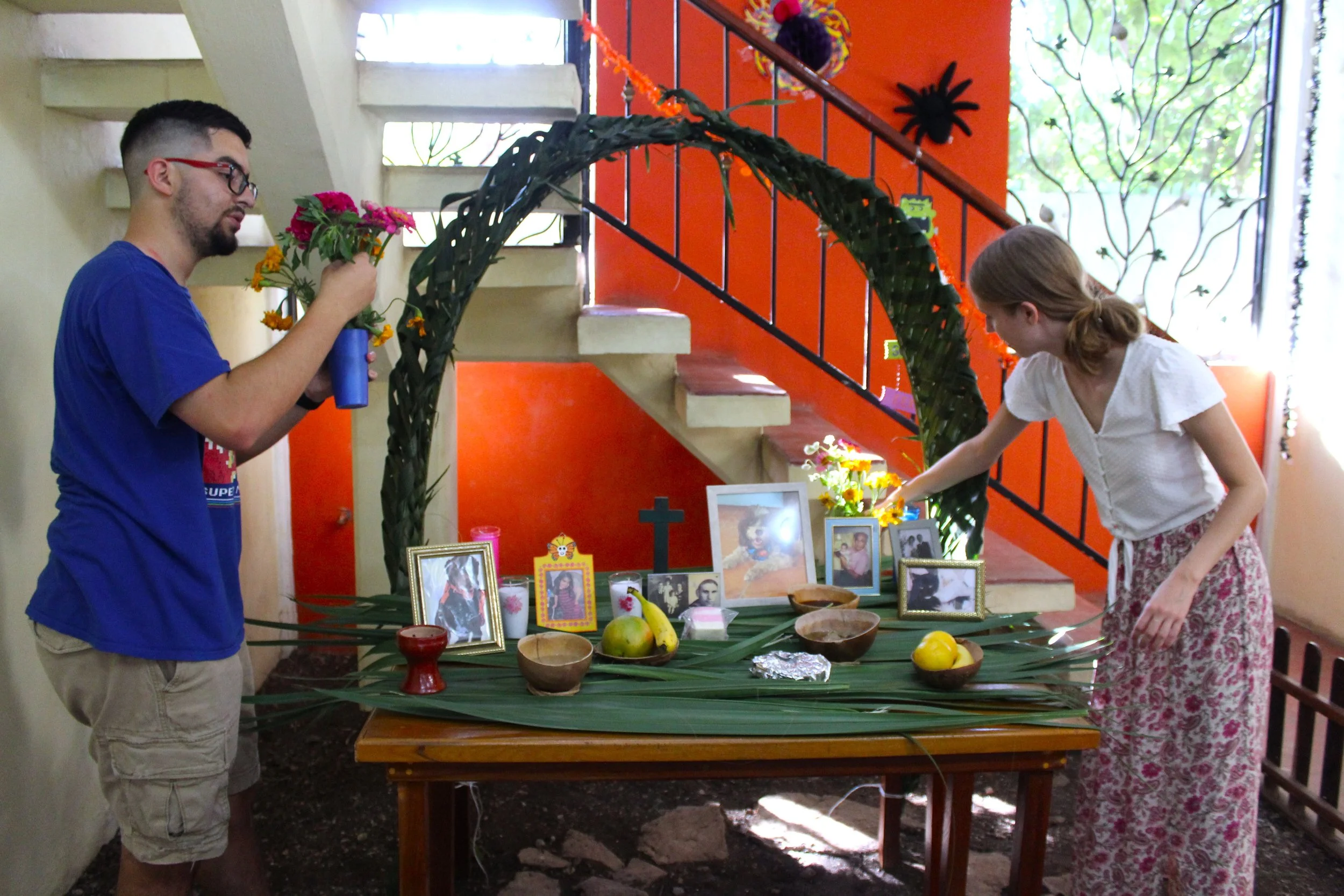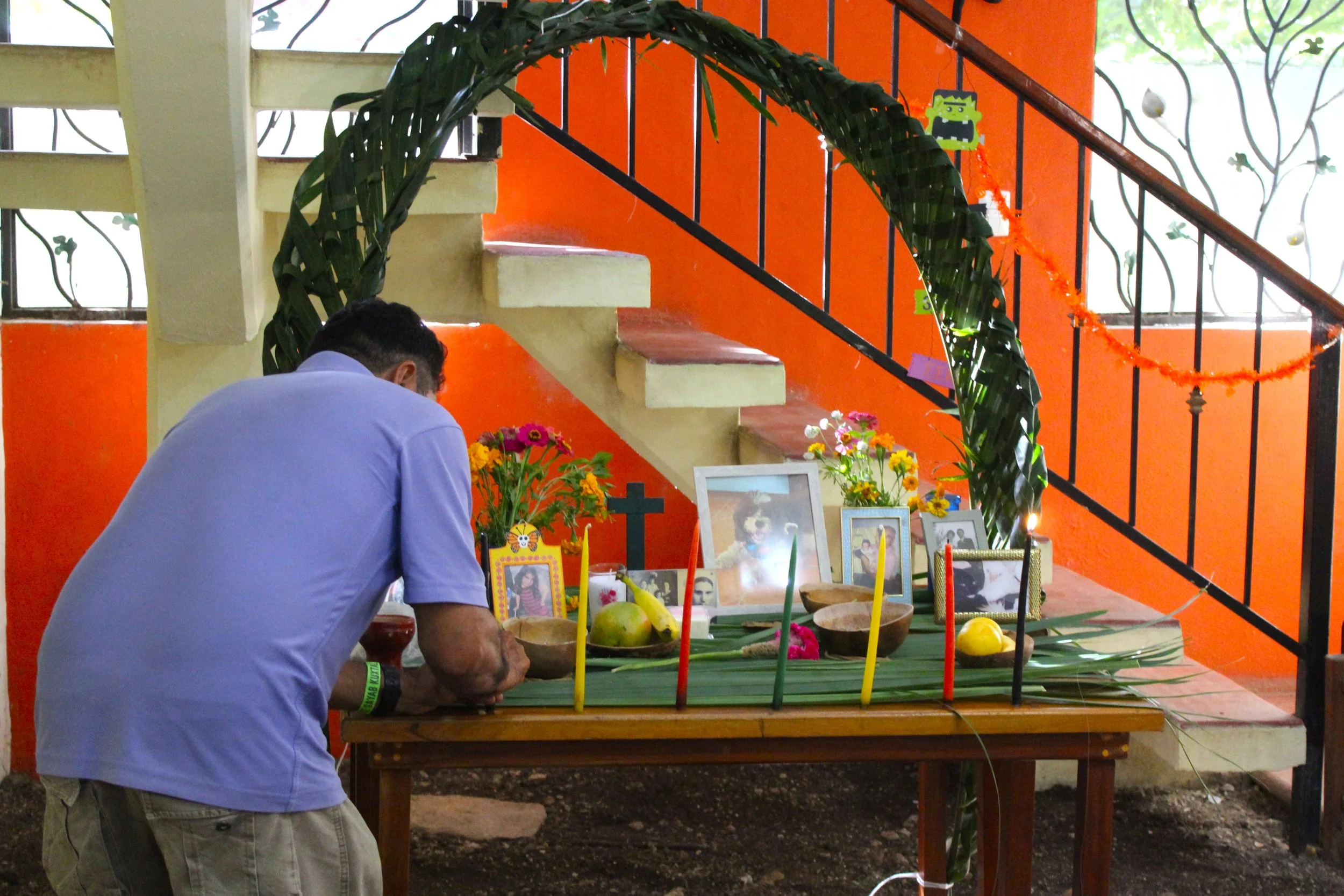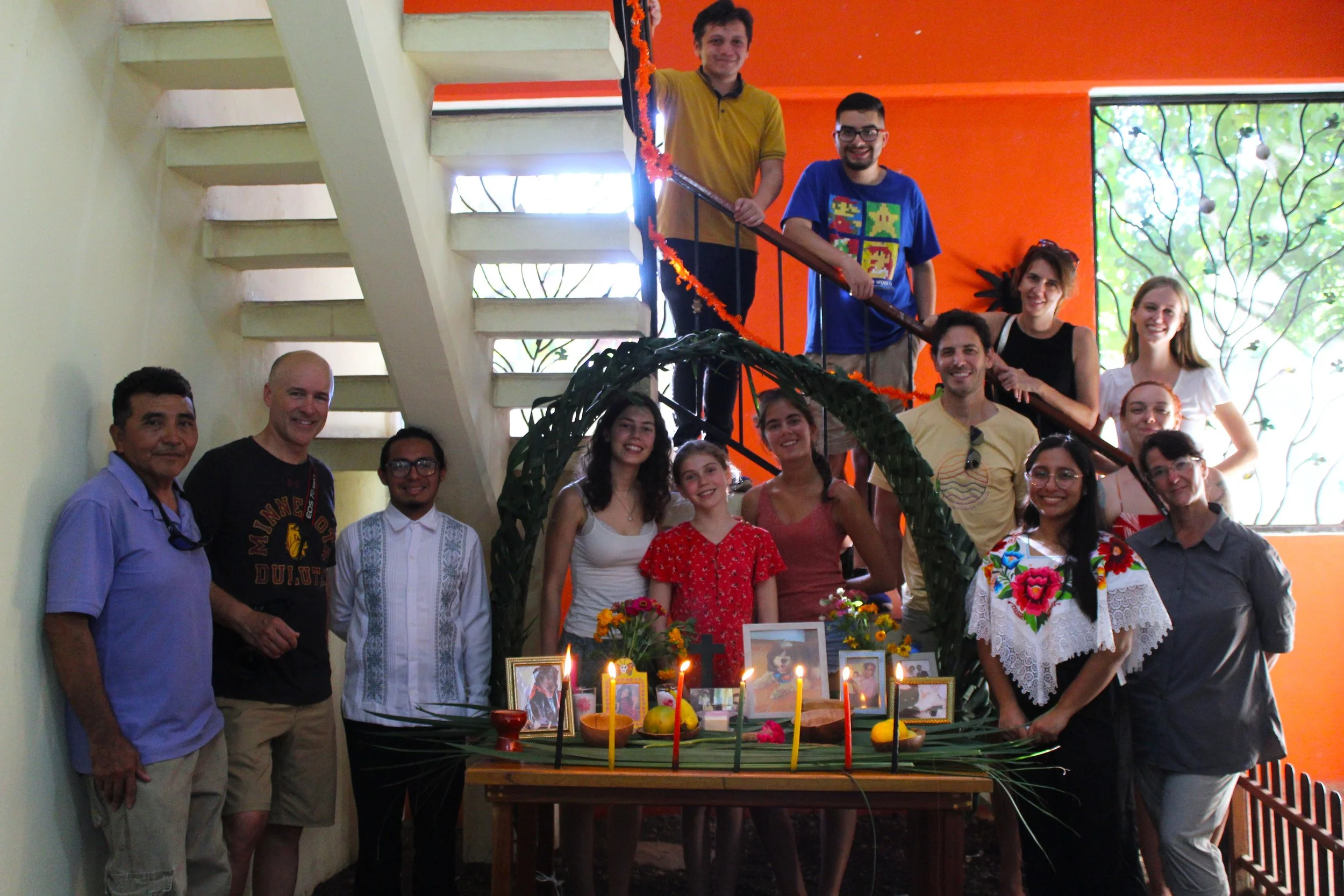Janal Pixán Altar: A Tradition with Maya Roots
Janal Pixán, which in Maya means "food for the souls" (janal = food, pixán = soul) is a Mayan tradition that, over time, has been influenced by beliefs introduced to México by the Spanish during the colonial period. For the Maya, death is not the final journey, but rather a transition to another spiritual plane. Therefore, every year from October 31st to November 2nd, each family sets up an altar with offerings to welcome the souls of their loved ones.
Janal Pixán is a celebration in which people remember their loved ones with love and joy through their memories and by preparing the altar where they will place their offerings. The altar is an important element of this celebration; however, unlike the altars prepared in other regions of México, in the Yucatán Peninsula, including the state of Quintana Roo, the altar is made somewhat differently.
Elements of the altar in Quintana Roo (Janal Pixán) and their meaning
Traditional food. The favorite dishes of the deceased are prepared as a symbol of abundance and a material offering to receive their spirit. In the Peninsula, mucbipollo is the central dish.
Candles. They guide the souls back home and mark their presence; they also symbolize the light of remembrance.
Water and beverages. To quench the soul’s thirst after its journey. In Maya tradition, the jícaras or ceramic vessels also hold ritual value and why they are used mainly in these ceremonies, because they come from nature.
Copal / Incense. It purifies the space, drives away negative energies, and helps “call” or ease the arrival of the souls. It is a pre-Hispanic element with great ceremonial value.
Local flowers. Flowers trace the path and bring joy to the visit, their scent and color attract the souls. In Yucatán, local species are used in addition to cempasúchil when influenced by the broader Mexican tradition.
Photographs of the Deceased and their names. They identify the person being received and keep their memory alive; they help focus the offering.
Personal objects and symbolic offerings (clothing, tools, toys, photos, written petitions). Represent what the deceased enjoyed in life or may need on their journey. In Maya tradition, most offerings are utilitarian or food-based.
Levels of the altar. Some altars are built in 3, 4, or 7 levels symbolizing the planes of the universe, the steps by which souls move or the structure connecting earth, heaven, and the underworld. The arrangement varies among communities and families. For us, in Quintana Roo, it is one level.
The bones. In the tradition of Quintana Roo, we need to place a jícara of bones at the entrance of the house. This is our offer to Death, Maya traditions say that Death loves to eat bones but it takes time to eat them, so, the more bones you place in the jícara the more time your relatives soul will stay in the house.
To learn more about Na’atik’s English language program for local and Indigenous students in Felipe Carrillo Puerto, visit our Impact Page. We are only able to provide this much needed program thanks to the support of generous donors and the funds raised from our award winning Maya and Spanish Immersion Program. If you would like to support our mission please consider donating today or take a look at our immersion programs and online class packages.

